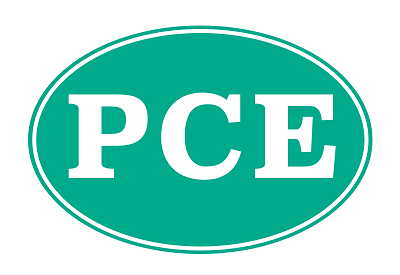
Date posted: 2nd Nov 2022
In a famous quote, Benjamin Franklin suggested “nothing is certain except death and taxes.”
Taxes are certainly a hot topic at the moment and in a state of uncertainty following two changes of Prime Minister, in recent months. “Trussonomics” suggested that taxes could be cut but the markets did not react well to proposed tax measures, which ultimately ended Liz Truss’ reign, as prime minister, in a record 50 days. Rumours are now abound about tax rises in the upcoming autumn statement on 17 November 2022, following the most recent change of PM and Chancellor.
As we are seeing, inflation is soaring which means that there are economic pressures on the Government to tackle the cost of living crisis. Increasing taxes will be seen as a controversial path, given it will impact the amount that you have in your pocket, but it seems that the Government intends to increase taxes based on recent press.
So what could the Government actually increase to bring more cash into the Treasury’s coffers.
Income tax
It looks like income tax bands and allowances will be frozen for the foreseeable years. It is unlikely that the rates will be tinkered with especially since the reversal of the proposed 1% cut but there are probably some areas of focus for the Government that could raise taxes. There are certain thresholds that could be adjusted such as the point at which child benefit starts to be repayable (currently £50,000 of income) and the threshold at which the personal allowance starts to reduce (currently £100,000 of income).
Currently, there are allowances for limited amounts of investment income, to be free of tax, such as interest income and dividend income. Increasing interest rates means that more interest will be paid to those with savings – does the Government reduce the tax free allowances to generate more tax on the back of the windfall of increased interest income?
Similarly, there are allowances to limit the amount of tax relief given on pension savings. Is this an area that the Government could focus on again, after changing the rules in the last ten years or so?
Capital gains tax
This is seen as a “rich man’s tax” by some and is usually paid when you sell a capital asset. The way to think of a capital asset is usually by thinking about what generates an income – for instance a buy to let property is a capital asset as it generates a rental income. Another example would be shares in a stock market listed company which generates a dividend income. Currently the rates of capital gains tax range from 10% to 28%, charged on the profit from the sale of capital assets. The highest rate usually applies to landlords selling buy to let properties. Landlords have faced increased taxation in the last few years and could see the sign of interest rates increasing as a time to get out of the buy to let market. If they decide to sell the property due to increasing interest rates then is now the time for the Government to take advantage and increase CGT rates on the sale of buy to let properties?
In addition, the lowest 10% rate usually applies to business owners selling up. Whilst the amount on which the 10% tax rate can be applied has reduced over the last few years, could there be further tweaking of the rules for business asset disposal relief (previously entrepreneurs relief) perhaps by say increasing the period that the asset (e.g. company shares) must be held or the percentage of shares that must be held to qualify for the reliefs. Or does the 10% rate simply become 15%?
Non-UK residents, apart from property owners, do not face CGT charges in the UK – is this something that the Government could look to change or simply increase the CGT rates on non-resident property owners?
Finally, a suggestion that has been mooted in recent times, is to consider CGT on the passing of assets at the point that someone dies. Currently, there is no CGT charge (due to the potential of an inheritance tax charge on the value of the estate) when an individual passes. At the same time, the assets are re-valued for CGT at market value, when they pass to the beneficiary. So let’s say Grandad Bob passes leaving a buy to let property to his adult grandchild Lucy, which is worth £100k, having cost Bob £20k. The £80k increase in the value of the property is ignored from a CGT perspective and if Lucy then sells the property for £100k, none of the uplift in value of £80k is subject to CGT on Lucy. Of course, it may be subject to inheritance tax but if Bob’s estate was not valuable enough to be above the inheritance tax threshold, then tax is completely (and legally) avoided. Is this something that the Government will look to change?
Inheritance tax
In simple terms, inheritance tax (IHT) is based on the value of someone’s worth when they pass away.
The basic IHT thresholds and allowances have not changed in many years, so it would seem really unfair to start to reduce those and I can’t see that the recently introduced extension to the IHT allowance to take into account the main residence, will be abolished or decreased.
The headline rate of 40% is also quite penal, especially considering that the assets that you own have usually been paid for out of after net income, meaning that the Government get another chance to tax monies that have already been subjected to tax – so my view would be that the rate will not change.
There are reliefs that may be tweaked such as the qualifying rules business property relief and agricultural property relief, but I suspect that the Government will ultimately leave those alone.
Corporation tax
This is the tax payable by companies on profits and capital gains.
At the moment, there is a flat rate of corporation tax of 19% regardless of the size of the company. We know that this is increasing from April 2023 to a headline rate of 25%, at least. However, the way this actually works (for a standalone company with no associates) is that the first £50,000 of income is still taxed at 19%, the next £200,000 at 26.5% and anything above £250,000 at 25%. Say the Government increase the headline rate to 27% and then increased the point at which the top rate starts, to look as if they are only attacking wealthier companies, then they could stealthily increase the tax for some other companies with lower profits. If they increased the top rate to say £500,000 then a company with say £250,000 of profits would pay another c£3,000 in corporate tax. Again, not much per company but with many companies likely in this range, is this something for the Government to “tweak” to raise smaller amounts?
R&D tax relief looks to be an area of focus for the Government. Recent press suggests that the Government have asked HMRC to focus on R&D tax relief and it would not surprise me if there is a significant change to the reliefs. One change could be for all companies, regardless of size, to use the large company scheme, RDEC, across the board. The RDEC is claimed by large companies and those with subsidised R&D expenditure, to claim a credit of 13% of the actual R&D expenditure.
Certainly with an increased corporate tax rate, it would be surprising to me if the 130% deduction scheme for SME companies remained as generous.
Another mooted idea would be for the Government to introduce a windfall corporate tax on the energy companies.
Employer taxes
It is unlikely that the rate of employer’s national insurance will be adjusted, having been increased and then decreased for the health and social care levy element in the current tax year.
However, the secondary rate of employer’s national insurance payable on benefits provided to employee’s, such as company cars, medical insurance etc, could be increased to bring in revenue.
Could the employer’s allowance, which is a credit of up to £5,000 against the employer’s national insurance liability, be reduced?
In a similar vein, those with a payroll bill of over £3,000,000 are required to pay the Apprenticeship Levy – could this threshold be reduced to bring more employer’s into the Apprenticeship Levy net?
Other taxes
Another increase that would impact everyone would be to increase the rate of VAT. The UK has a similar VAT rate to countries such as Germany, France and Spain but countries such as Sweden, Denmark and Portugal have higher rates of standard VAT. Whilst it would be an unpopular move, is it one under consideration?
If you own more than one property and acquire another, you are faced with a stamp duty land tax surcharge of 3%. Could this percentage be increased?
Could we see the introduction of a “Wealth tax” in line with countries such as France, Spain and Portugal. It would seem controversial and would need a lot of planning, so perhaps it is not for this Government given that there will be an election in late 2024 or early 2025.
Finally, could we see a temporary reduction of the “green taxes” that form part of everyone’s electric bill – such a reduction could soften the impact of removing the current energy bill subsidy in April.
Plug the tax gap
The government estimates that there is a tax gap of c£32bn – this is the difference between the amount of tax that should be paid, in theory, against the tax actually paid to HMRC. HMRC believe that there are numerous reasons for the tax gap, including tax evasion, criminality and errors made by taxpayers in calculating their tax bills. Could the government use some of the increased taxes to give further resource to a stretched HMRC to start to tackle the tax gap?
Ultimately…
There are going to be increases, that appears clear, but how (and when) those changes are brought in, remain unclear. The Autumn Statement on 17 November 2022 will outline what changes are made and from what point – some of course, based on recent history, could be immediate changes, especially for CGT.
As ever, the Clive Owen LLP tax team will keep you updated with any changes and will be able to answer queries on how the upcoming Autumn Statement impacts you, once it has been delivered.
Contact us here should you have any tax queries.


